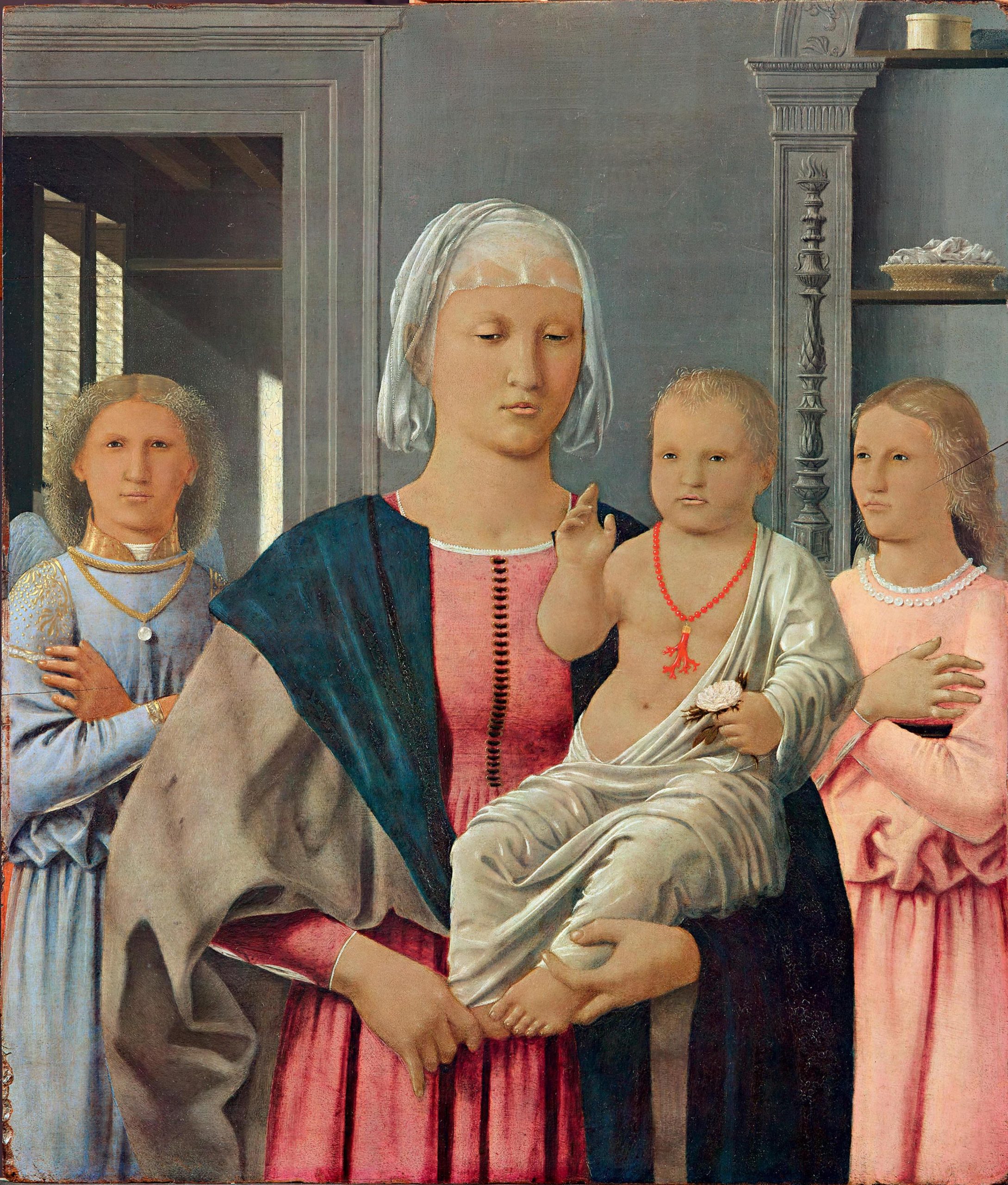My Favourite Painting: Tony Hall
Lord Hall chooses a masterpiece by Della Francesca.


Tony Hall on Madonna di Senigallia by Piero della Francesca
‘Television gave me my love of paintings. And Kenneth Clark — one of the great directors of the National Gallery — gave me my love of Piero della Francesca. When I watched his BBC series Civilisation in my living room on the Wirral, I wanted to go to the Ducal Palace in Urbino.‘Some years later, I made it and, with my baby daughter strapped to my back — busy waving at the custodians — I came across this painting. The backlighting brings out golden strands in the hair of the angel on the left and the light, too, emphasises the transparency of the Madonna’s veil, the beauty of the angels’ pearls and the stunning coral necklace around Jesus’s neck.’
Lord Hall of Birkenhead is the new chairman of the board of trustees for the National Gallery, London.
John McEwen on Piero della Francesca
This small, privately devotional painting was discovered in 1822 in the Observant Franciscan convent of Santa Maria delle Grazie, near the port of Senigallia on the Adriatic coast.
Oil paint was invented in the Low Countries and its use by Piero for this picture, as well as the characteristically Flemish details, such as the windows and exquisite renderings of everyday objects, point to the northern influence on Italian painting that took place in the 15th century.
Towards the end of his distinguished career, Sir John Pope-Hennessy gave a lecture on Piero, published as a book, The Piero della Francesca Trail (1991). He mentioned this picture last, praising it as ‘one of the most private paintings that has ever been produced’, but did not describe it in detail, preferring to deplore ‘the fantastic literature’ that had ‘sprung up about his [Piero’s] imagery’.
He quoted from Susan Sontag’s Against Interpretation: ‘Our task is not to find the maximum content in a work of art, much less to squeeze more content out of the work than is already there.’
One should bear his warning in mind when reading that the light thrown by the windows symbolises the Madonna’s sinless Immaculate Conception; that the coral necklace worn by Jesus is prophetic of his Crucifixion, the sacrifice commemorated in the Sacrament of the Holy Eucharist; and more besides.
What is undeniable is the solemn acceptance by the angels and Mary of the infant Jesus’s blessing. Most maternal and tender is the right hand of the Holy Mother as she fondles the toes of the divine Christ, a baby nonetheless.
Exquisite houses, the beauty of Nature, and how to get the most from your life, straight to your inbox.
Country Life is unlike any other magazine: the only glossy weekly on the newsstand and the only magazine that has been guest-edited by His Majesty The King not once, but twice. It is a celebration of modern rural life and all its diverse joys and pleasures — that was first published in Queen Victoria's Diamond Jubilee year. Our eclectic mixture of witty and informative content — from the most up-to-date property news and commentary and a coveted glimpse inside some of the UK's best houses and gardens, to gardening, the arts and interior design, written by experts in their field — still cannot be found in print or online, anywhere else.
